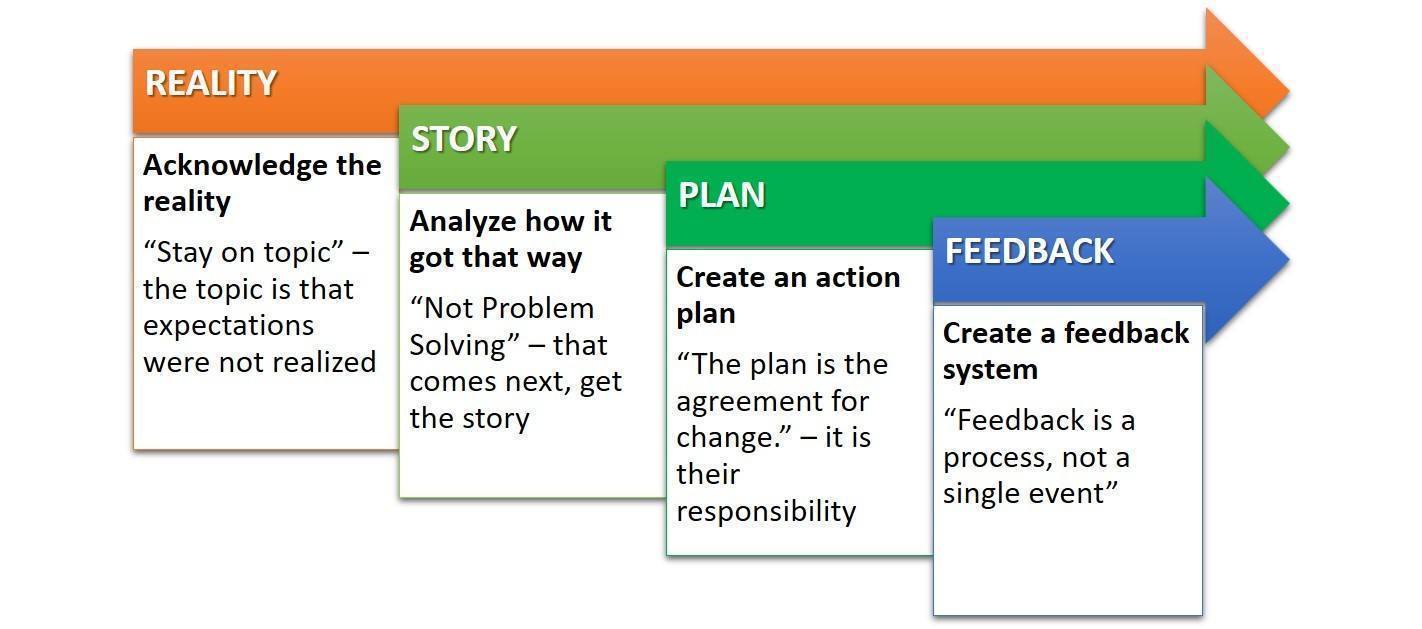A "moment of truth" conversation is just as it sounds—brief but impactful moments designed to foster learning and growth. When handled properly, it guides individuals toward achieving excellent performance. In my experience, these moments typically last only a few minutes but they reveal potential.
Every leader encounters situations where someone needs correction, whether in their behavior or on a specific project. However, it’s easy to overlook these opportunities, which only makes the conversation more difficult when it eventually arises.
By embracing the principle of "measure small, measure often," you help individuals adjust proactively, preventing small issues from escalating into major problems. This approach is the core idea behind the "moment of truth" concept created by Robert Fritz and Bruce Bodaken in Managerial Moment of Truth.
As a certified instructor of MOT, I've seen firsthand how profoundly it impacts leaders, individuals, and organizations. The 'moment of truth' is a powerful leadership tool that plays a crucial role in fostering a culture of performance excellence that extends throughout the entire organization.

Know a Moment of Truth When You See IT
Understanding something requires a clear definition, and a "moment of truth" is no exception. Here’s what it means:
- Awareness: That there is a difference between expected and actual delivery.
- Decision: you make what to do with that information.
The first, Awareness, involves paying attention to the goals and tasks of the people you work with or lead. It also means clearly defining the expectations and desired outcomes of their work. This ensures that any gaps between what was expected and what was delivered are easily recognized.
Both of these elements are straightforward, but they require a leader's time and effort. If you don’t engage in these practices with those you lead, you’re neglecting a crucial part of your leadership role and may not see the benefits of their potential.
The second part, Decision, holds the potential for growth and improvement. What happens if you set clear expectations, monitor progress, and realize that those expectations weren’t met—yet do nothing about it? Performance excellence cannot be achieved in that scenario unless your team members are highly self-motivated.
Too often, leaders turn to punitive or controlling measures, creating an environment of fear that stifles learning and growth. This approach should be avoided at all costs, as it undermines both the team’s potential and the leader’s ability to guide effectively.
Neither of these approaches is acceptable.
A moment of truth is truly effective when leaders are both aware and make the decision to foster learning and growth. However, even when you choose to help others grow, you’ll face emotional resistance. You’ll either choose to share the truth and act in the best interest of those you lead, or you won’t. You’ll either value truth and the development of people, or you won’t.
Be Careful
Think about a recent situation where you learned that someone didn’t meet the required expectations. It could have been someone who works for you, with you, or even a family member. If you have a specific situation in mind, you are already in the first part of the "moment of truth" definition: Awareness.
Now, consider what you did once you realized the expectations weren’t met.
Too often, leaders do nothing! This happens far too frequently. The emotional conflict that arises is one of your greatest obstacles. It’s often a mix of thoughts like, "I don’t want to hurt their feelings" and "I’m too busy right now." These two thoughts can lead to inaction.
Sometimes, you may say something but handle the situation poorly, which then sets the stage for avoiding the issue next time because the first attempt was a failure.
Does this sound familiar? It certainly does for me.
When someone misses expectations and you either remain SILENT or handle it POORLY, you’re implying that it’s acceptable to perform below excellent standards. You’re sending the message that it’s okay to fall short if there’s a reasonable excuse.
This creates a structure where poor performance becomes acceptable to both the organization and to you. On the flip side, when the situation is managed well, you’re communicating that growth, learning, development, and performance excellence are valued and expected.
So, what will you do the next time you become aware of unmet expectations? Just remember, your actions will always communicate what you truly value and this will help your team reach its potential!
Two Types of a Moment of Truth
When people first encounter the concept of a "moment of truth," they often see it as a tool for correcting someone's behavior. This makes sense, especially when we’re discussing unmet expectations and how to address them. However, there are two types of moments of truth: Corrective and Positive.
As the name suggests, the Corrective Moment of Truth is used to address and correct a person’s behavior.
Examples include:
- Missed deadlines
- Incomplete assignments
- Unacceptable quality of work
- Unclear goals
- Failing to support values, strategy, or purpose
- Poor attitude or lack of alignment
- Lack of preparation
- Incomplete or inaccurate information
On the other hand, the Positive Moment of Truth is focused on learning from someone who has exceeded expectations. It’s about understanding what they did differently or better than others and using that insight to teach others.
Examples include:
- Exceptional performance
- Breakthrough thinking or actions
- Transformational change
- Achieving significant results
Important note: Positive moments of truth are NOT about recognition, praise, or affirmation. They’re about learning from the individual’s success and applying those lessons to help others in the organization grow.
